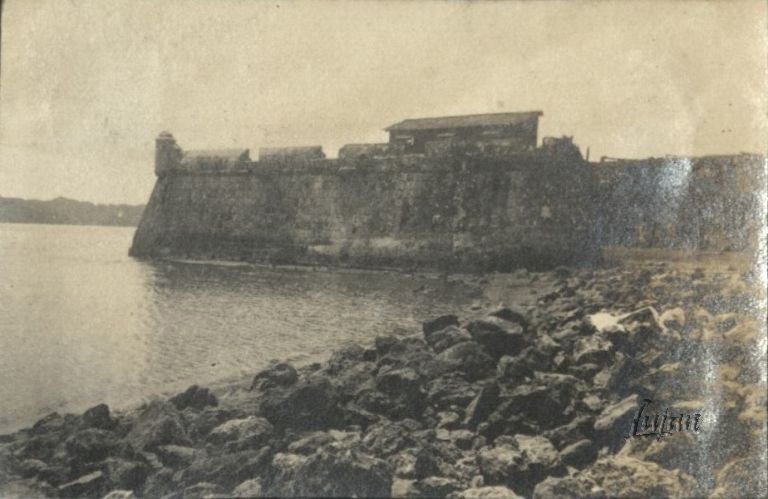This post is originally written and posted by Nereo Cajilig Luján.
On 10 October 1903, President Theodore Roosevelt declared Fort San Pedro and its adjoining areas in Iloilo City as a military reservation, covering 34.5 hectares.
First built out of wood by Pedro Bravo de Acuña in 1602, Fort San Pedro protected La Punta (the old name of the town of Iloilo) from Moro attacks.

It was later renovated to become a stone fort by Diego de Quiñones following the Dutch attack on Iloilo in September 1616.
It was here where Quiñones found the image of the Our Lady of the Most Holy Rosary which became the patron saint of the San Jose Placer Parish.
In some documents, Fort San Pedro was referred to as Fuerza de la Nuestra Señora del Rosario.
Aside from being a military outpost, the Spanish government used part of the fort as a prison for Moro pirates.
In 1738, it was again reinforced, fitted with 30-foot thick stone walls and 50 cannons.
It was taken over by the Americans following its invasion of Iloilo after the Philippine War erupted.
It became the base of various US military units of the Department of the Visayas under Brigadier General Robert P. Hughes, from whom General Hughes Street was named.
It continued to serve as a prison until 1911 when the Iloilo Provincial Jail was opened.
Since there was spare space in the military reservation, it eventually accommodated the offices of the Bureau of Lands, the Bureau of Forestry, the district engineer, and the provincial treasurer of Iloilo.
There was an airstrip here that witnessed the 1932 inaugural flight of the Iloilo-Negros Air Express Company (INAEC), Asia’s first commercial airline, and where its hangar was built.
In 1936, President Manuel Quezon designated the entire Fort San Pedro Military Reservation as a Philippine Army Post.
Under Proclamation No. 111, Quezon ordered all offices in the reservation to vacate so it can be solely used for military instruction and training under the National Defense Act of 1935.
“I hereby designate the San Pedro Military Reservation as a Philippine Army Post and declare the whole area and the buildings thereon open for occupancy by the Philippine Army not later than December twenty-seventh, nineteen hundred and thirty-six,” his order read.
Army barracks were then built in what is now Camp General Martin Delgado, named after the revolutionary hero and Iloilo’s first civil governor.
However, the offices of the Bureau of Lands, the Bureau of Forestry, and the district engineer never relocated despite Quezon’s order.
When World War II erupted, the Japanese imperial army first bombed the INAEC hangar and seized control of Fort San Pedro which it made into its army headquarters.
In March 1945, combined forces from the United States Navy and the United States Army Air Corps bombed all Japanese installations in Iloilo and pulverized Fort San Pedro.
Following the signing of the “Transfer of Certain Military Reservations” in 1949, the US government turned over 25 military reservations to the Philippine Government, including the ruined Fort San Pedro.
Read also: List of Iloilo City Cultural Heritage Sites